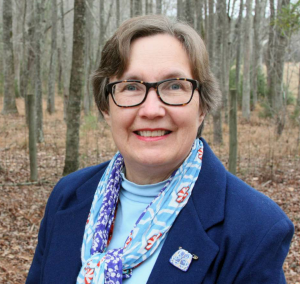Judith Corley-Lay Sets Goals to Advance Pavement Preservation
BY Paul Fournier

Judith Corley-Lay, Ph.D. in civil engineering, brings 40 years of experience and professional registration to her new role as the head of the National Center for Pavement Preservation (NCPP).
After serving 25 of those years with the Pavement Management Unit of the North Carolina Department of Transportation (DOT), Corley-Lay was looking forward to spending her retirement in pursuit of home remodeling and other projects with her husband, John Lay. She had achieved her lifelong career goals and was ready to kick back and relax. Then she learned that Larry Galehouse, director of the NCPP was retiring.
“I thought about how successful he has been in advancing pavement preservation, working with stakeholders in industry, government and academia—he even helped establish NCPP more than a decade ago,” she said. “I felt it’s important that the advancements he achieved continue to be supported. And since I have extensive experience and a real passion for pavement preservation, I believe I could help make that happen. So I applied for the position.”
Corley-Lay was selected to succeed Galehouse as the organization’s new director. She said he is a “hard acct to follow,” but is confident she can meet the challenge of shepherding NCPP. Michigan State University (MSU) and the Foundation for Pavement Preservation (now called FP2), established NCPP in 2003. It is housed within the Department of Civil and Environmental Engineering at MSU. It provides education research and outreach in cooperation with public and private agencies and organizations to advance pavement preservation. This includes preventive maintenance, which extends the life of pavements with such techniques as crack filling and sealing, thin overlays, and chip sealing, among others.
The late Jim Sorenson, senior construction and preservation engineer for the Federal Highway Administration’s (FHWA) Office of Asset Management, was an early champion for pavement preservation. As a representative for FHWA, he partnered with state DOTs and worked closely with private organizations such as the American Association of State Highway and Transportation Officials (AASHTO) to promote pavement preservation. The close working relationships between government and private organizations continues today.
For example, AASHTO developed a state-funded Transportation Systems Preservation Technical Services Program (TSP2) with FHWA financial support to foster cooperation among private industry, academia and government agencies. The management of this program on the AASHTO website has been contracted to NCPP NCPP also helped establish regional Pavement Preservation Partnerships that link pavement professionals from public agencies with private industry, providing forums for sharing information on the latest developments in this field.
Currently, there are four regional partnerships: the Midwestern, the Northeast, the Southeastern and the Rocky Mountain West Pavement Preservation Partnerships. In addition, NCPP maintains a national reference library offering the latest literature and reference materials on current practices, active studies and research on pavement preservation practices.
Setting Goals

Judith “Judy” Corley-Lay is the new director of the National Center for Pavement Preservation
As director, Corley-Lay oversees NCPP’s daily activities and makes periodic reports to the group’s advisory board and the chair of MSU’s Department of Civil and Environmental Engineering. For the future, she has set a number of goals she’d like to achieve in her new role—one of them is to attend every Partnership meeting.
“I recently attended my first Northeast Pavement Preservation Partnership meeting, which was held in Portland, Maine,” she said. “These meetings provide a great opportunity for all stakeholders of pavement preservation to get together and discuss common problems and issues. We don’t talk about specific products or equipment, but discuss general topics and issues.”
She would also like to collect updated specifications from state DOTs on their preventive maintenance treatments.
“With updated state specs, we can determine common areas and help Partnerships develop their own regional specs. This simplifies the work of the agencies, contractors and other stakeholders in that region. It also eases compliance efforts of the agencies and reduces risk for contractors and materials suppliers when they’re all working from common regional specs.
“In this regard, we could also help the Partnerships develop common regional checklists for the application of various preventive maintenance treatments.”
She also wants to expand NCPP’s local outreach to transportation agencies for cities, towns and counties.
“Local representation differs widely among the partnerships,” she said. “For example, the Southeastern Partnership has good local representation at their meetings, but the Northeast doesn’t—at the last Northeast meeting, there wasn’t a single municipal or county representative.”
Another issue she wants to address is the aging population of pavement practitioners. “Turnover is large, and we’re losing many of the people in this field due to attrition. To counter this, we could set up an outreach program to attract young people to careers in pavement preservation.”
Improving career training for pavement preservation practitioners is also on the agenda. “NCPP could establish a program to provide training for people when they need it. The program would take into account the differences in training needs for various stages of an individual’s career development. Initial training in chip seal placement for a contractor’s laborer, for instance, may differ from what is needed if that person advances later in life to managing a pavement preservation system for a community.”
NCPP’s new director admits her list of goals is ambitious, but she is confident they’re achievable. “I believe the key to success in this job is to develop good working relationships—with my own staff, state agencies, materials producers, contractors and others. I’m a collaborative person. I feel that the more people on the team, the better the results.”
